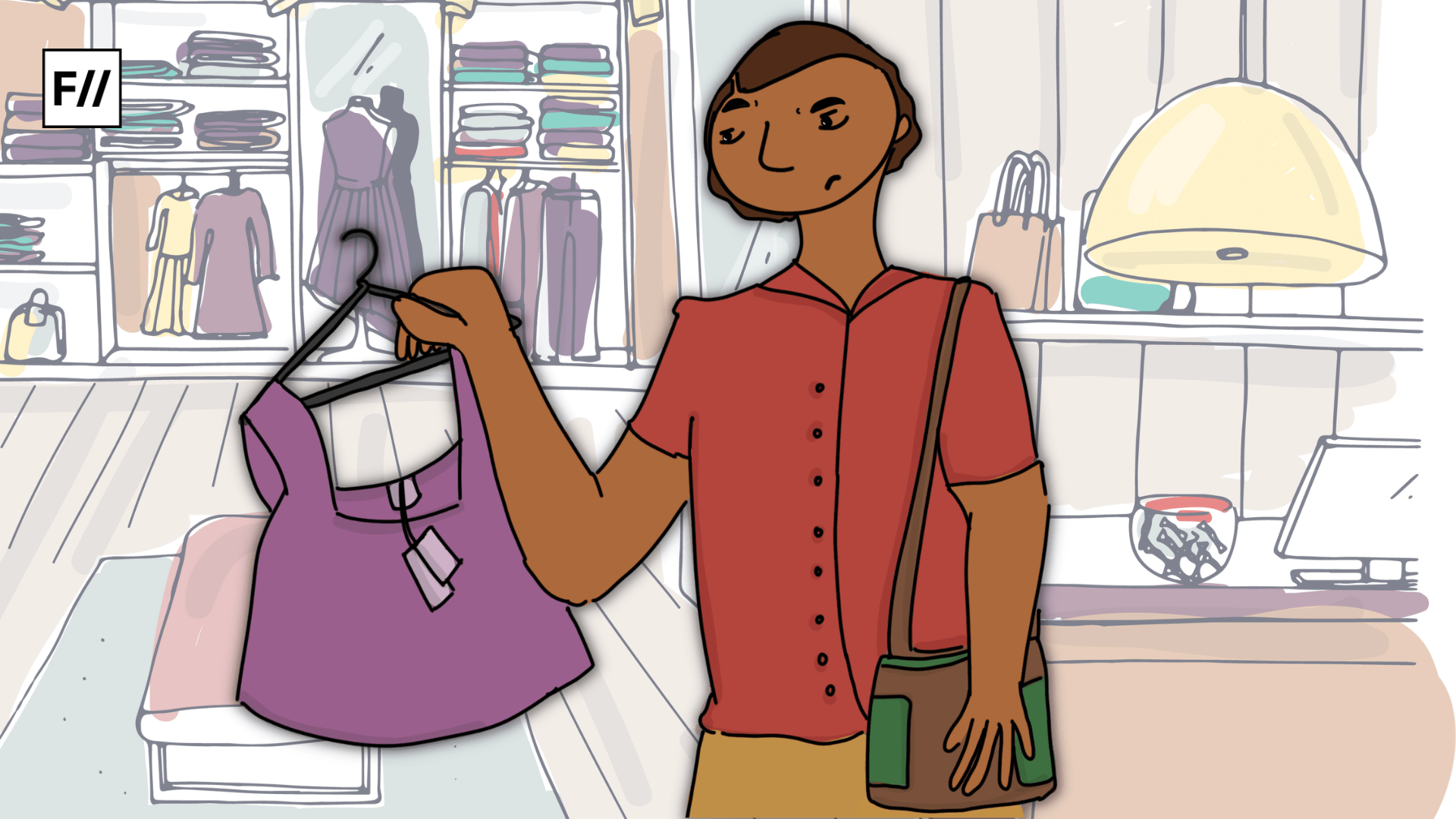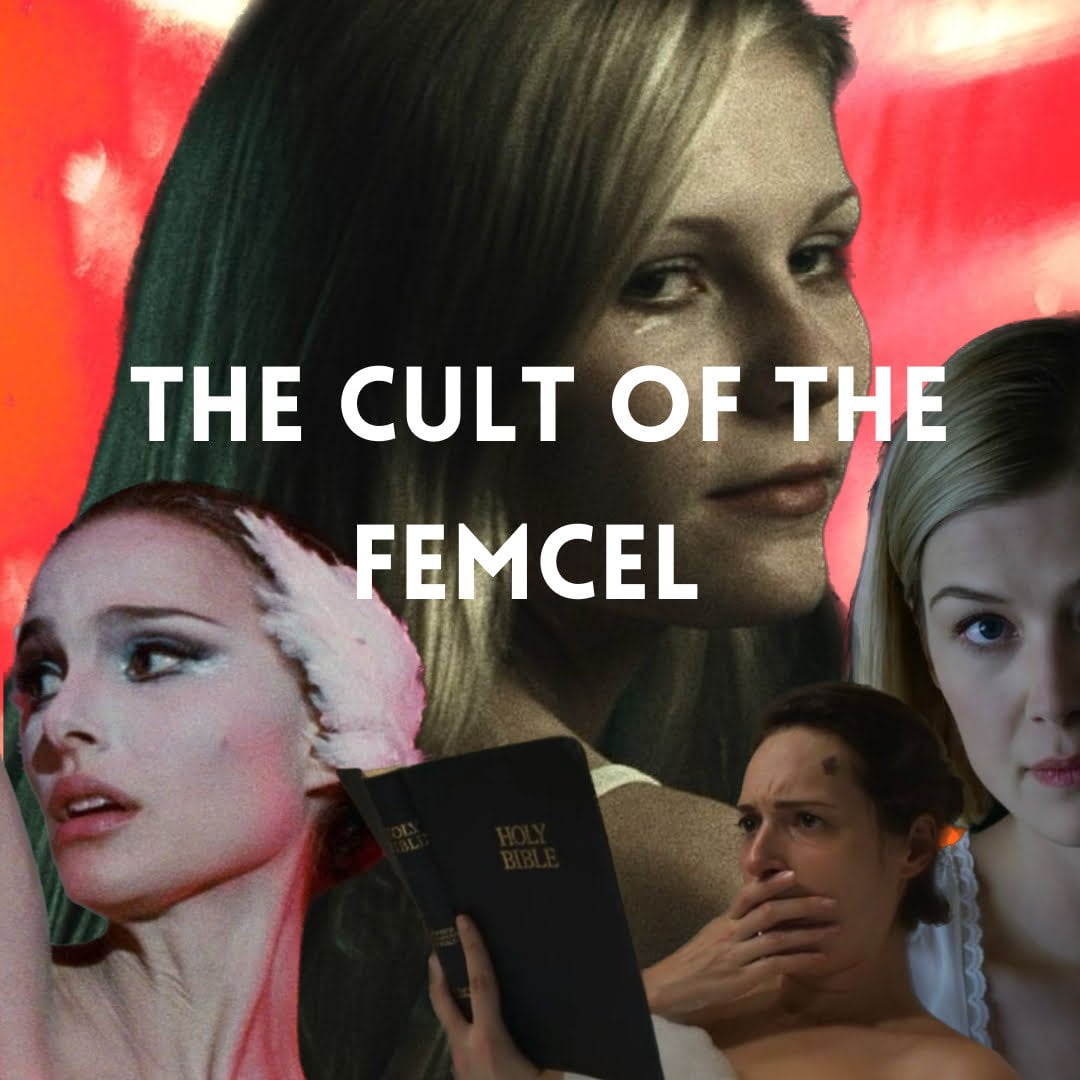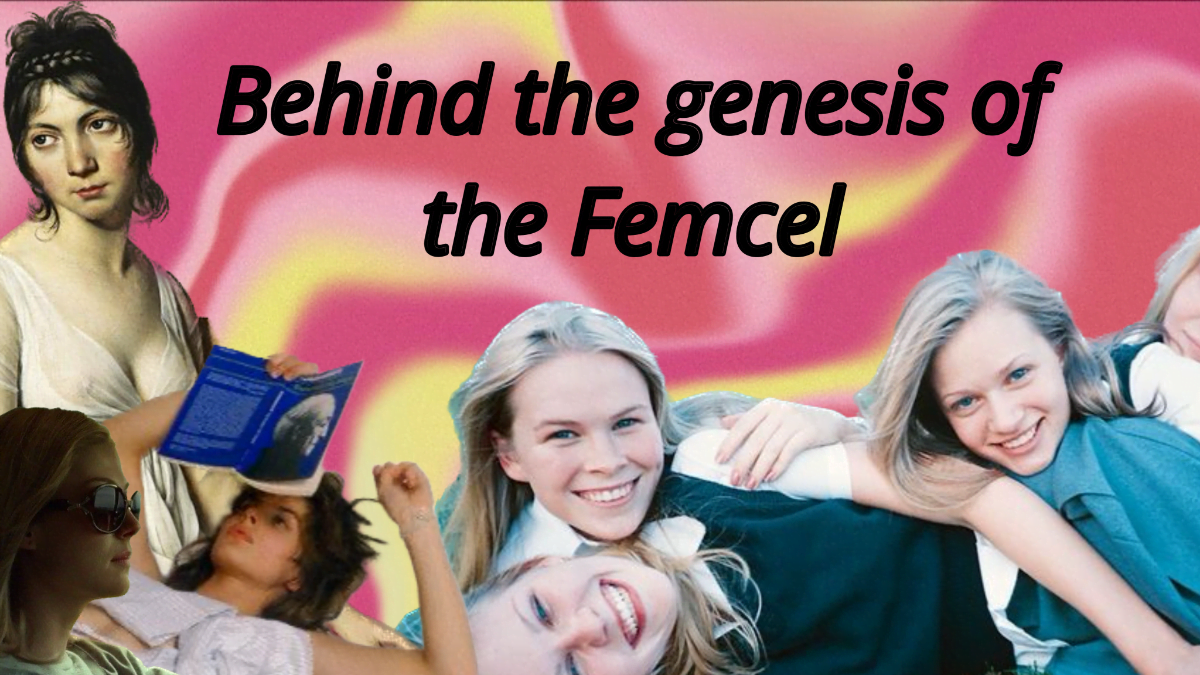‘I think I’m a little afraid of men‘, A, a 25 year old South Asian student, told me, explaining why she identifies as a femcel. ‘Being a femcel means you’re a woman of below average attractiveness – at this point you can still get sex with men, but most women aren’t interested in being used like that.’
The femcel subculture today is emerging from the crevices of mystery, surfacing on the internet, with “The Femcel Revolution” and the rise of the modern femcel. The genesis of the modern day femcel is relatively new compared to its male counterparts – the angry and chronically lonely men of the ‘incel’ community, who have now risen to prominence as a well established terrorist threat by the federal government of the USA. Tres Genco, a self described incel, admitted to plotting a hate crime, of shooting women at a university in Ohio. A note discovered at his premises referenced the date of a 2014 mass shooting committed by known incel Elliot Rodger that killed six people at the University of California,
In other writings, Genco stated he would ‘slaughter‘ women ‘out of hatred, jealousy and revenge…‘. Such incidents have grown in proportion and number, with mass coverage of the ‘manosphere’ and how this fusion of violent misogyny and white supremacy was coming into existence. Back in the late 2000s, this was a frenzied discovery. The pathos of how an online community grew exponentially as a material real threat startled the country, and femcels, whose rage and isolation was quieter, smaller and much less known, were obviously not known beyond their circles.

The subreddit r/Truefemcels that is out of order right now for being banned as a group promoting hate, was a play on the truecels incels subreddit that used to exist. ‘It’s for the real ones‘ A tells me. ‘True losers and the ugliest people, they were closest to the real original femcels‘. The femcel, contrary to popular opinion, isn’t a monolith entity, the identity of the femcel has gone through various alterations, even producing splits between the group. There are the “real” femcels and then there are the “posers”- mostly teenagers, white girls, who like the “aesthetic” of the femcel and don’t perfectly fit the stereotype of femininity and happen to label certain books, films and objects as “femcelcore” – a term that rose to prominence on pinterest boards and niche twitter spaces.
After the disbanding of the Truefemcels subreddit, the femcel community scattered in sites like Pinkpill and the subreddit Female Dating Strategy. Then again, to visualise a femcel is difficult as most of these women are shunned from the spaces they are in. ‘There are radical feminists, there are aesthetic edgy teens with fringe political beliefs, there are women who are crippled by loneliness, body dysmorphia and what not, it is a whole spectrum‘, one user says. Female Dating Strategy has been notorious for “helping” women in maximising their pursuit of a “High Value Man”. Subreddits like r/Vindicta, r/Splendida focussed on ‘lookmaxxing’ that helped women to improve their looks by either softmaxxing (makeup) or hardmaxxing (Surgery).
The femcel, contrary to popular opinion, isn’t a monolith entity, the identity of the femcel has gone through various alterations, even producing splits between the group
The status of these sites with the “original” femcels has been deteriorating as A tells me, ‘We see where they’re coming from but I don’t see the point in pursuing relationships with men – the goal of these sites is still catering to the obsession of achieving the happy ideal, the ideal of finding men and relationships.’ These types of femcels then prefer to frequent and congregate on imageboards for women like crystal cafe and lolcow.farm. These are still niche fringe spaces that have acted as a recluse for femcels after the infamous ban of r/Truefemcels in June, 2020.
With the rise of the femcels, from the nooks and crannies of niche internet forums to gen-z lingo, mainstream digital spaces, what does this reclamation of loneliness mean to the femcels of today? Headlines have heralded the coming years as ‘The Femcel Revolution’. The common consensus is that Femcels are nothing like incels, who are violent bigoted men responsible for mass shootings, systemic misogyny, all motivated by their disdain for women and the denial of their “right to sex”.
A twitter discourse that broke out in the past year stated that ‘when men are lonely, they become mass shooters, but ugly and lonely women don’t bear that affliction’. Multiple twitter users then have pointed out the reactionary politics of femcel spaces, their intersection with Eating Disorder communities who often tend to be racist, fatphobic and extremely ill and vile. The debate then spawns on, what does a community of female loneliness look like today? Is there community to be sought in the new imagination of the femcels, both old and new?
A reached out to me under a reddit post about femcels, A grew up frequenting sites like 4chan and identified in some ways with the incel experience. ‘Sure they were white boys and I was a brown girl, but they were weird and particularly not good looking. There was an authenticity present in incel communities that body positive spaces lacked‘, A tells recalling her time becoming a femcel. The femcel subculture has begun to pose as a counter revolution to what A considers contemporary feminism today. The rise of the girlboss has been a millennial conceptualisation, a much debated topic of contention today.
‘Mainstream feminism was just girlboss nonsense at this point and it seemed to cater to rich white girls. I’ve read my share of feminist readings and I love Dworkin‘. A didn’t like the saccharine and more ‘positive tone’ of such feminist spaces, to her, it felt patronising and denied the objective reality of being an ugly woman. So she sought after sites and communities that were grittier and admittedly bleaker, ‘It matched how I felt, you know?’, she says.

According to many incels however, a femcel doesn’t exist. They tend to hate the idea of the femcel. They believe being a woman is living life on easy mode, and they care about sex primarily, which isn’t a concern for femcels. So the common sentiment from incels is that femcels are not ‘real’. Such a sentiment is not limited to just incels, its a widely held belief that women are privileged in the dating sphere, that they wield dating and cultural capital by the default of their existence. The commonly held association has been one of women having ‘community’ and having it ‘easy’ while men have been relegated to the realms of isolation and hardships in terms of dating and relationships. Much is to be learnt from Amia Srinivasan’s book The Right to Sex – Feminism in the 21st century where she writes of this very cultural presence, ‘This is the deep contradiction at the heart of the incel phenomenon: incels oppose themselves to a sexual market in which they see themselves as losers, while being wedded to the status hierarchy that structures that market.‘
Femcels do exist and they question and interrupt this very assumption, which is maybe why for incels, denial of their existence is much easier to perform than confronting the reality of an ubiquitous alienation. Femcels experience isolation and loneliness the same way incels do, but instead of externalising their isolation, they turn it inward, ‘female socialisation‘, as A remarks rather grimly. Women turning their pain inward has for long been a cultural motif. Research released by the National Library of Medicine, in 2000, posits along with multiple such studies, that women tend to choose less violent ways of suicide compared to men.
In ‘Method, Choice, Intent and Gender in complete suicide’, DG Genning writes that women who commit suicide use less violent methods, such as drugs and carbon monoxide poisoning, than do men, who more often use violent methods such as guns and hanging. The question that needs to be posed then isn’t if femcels are much less harmful than men. It is rather an obvious question with an obvious answer regarding this inward facing harm and the politics of it. What does this mean for the femcels of today? Is turning your hate inward not encompassing of violence, even when self-inflicted? Femcel spaces more often than not become breeding grounds of internalised misogyny between women.
Subreddits like Vindicta are scattered with posts of ‘ugly’ women menacingly criticising those who meet the beauty standard, complaining about ‘pretty privilege’ and the patronising tone that many ‘conventionally attractive’ women hold towards them. A believes that this is a prevalent issue in some femcel spaces, where femcels view the average woman as ‘vapid and disposable’. ‘It’s mostly envy that is so unbearable you just have to turn it into something else and that something else ends up being “Stacy is a stupid whore“‘.
Femcel spaces more often than not become breeding grounds of internalised misogyny between women
This lies in stark contrast to the image and iconography of the ‘femcel’ today. In the past year, the employment of this term has taken up a new wave in contemporary culture, forming its own grammar, structure and lexicon. The semiotics of the modern femcel leaves much to be desired for, as they seem to operate in a language and manner of their own. On twitter, a ‘femcel’ is just synonymous to lonely and single. On ‘Instagram’ it has formed an ironic (or not?) cult of images, icons and cultural associations in itself – the word seems to have been completely divorced from its lesser known original meaning.
Instead it rather seen as an ‘edgy and grim’ identity, bordering on silly and goofy, the era of the femcel is circumscribed by chronically online women who don chunky goth crosses, read The Virgin Suicides, watch movies and listen to music that borders on the category of ‘male manipulator’ and ‘femcelcore’. A twitter user posted a picture of her wall adorned with album art of famous artist and musician, Mitski, and captioned it saying, ‘now the mitski femcel wall is complete’.
The modern femcel is more so concerned about the aesthetic of loneliness than the prospect of involuntary celibacy. She posts Lana Del Rey. Her favorite lisbon sister is Lux. She can recite the Cool Girl Monologue from Gone Girl verbatim. She will incessantly post Fiona Apple on her instagram story and romanticise her suffering. She reads My Year of Rest and Relaxation and draws parallels between herself and the reprehensible characters of Moshfeghian novels. She enjoys catholic iconography and takes pride in the otherwise sexist labels of ‘toxic’ and ‘manipulative’.
She posts pictures of her pink trinkets along with pink vodka and hopes to will her self actualisation into existence by the use of empty signifiers, the hollowness of imagery and aesthetic and no radical change, and much to her dismay, she is looked down upon by some of the ‘original’ femcels who view this nouveau phenomenon as a gross misappropriation of the term. A both agrees and disagrees with this sentiment, commenting on the birth of the modern ‘in-spirit’ femcel, ‘They seem to have a touch of levity in their exploration of femcel culture, and that layer of irony necessarily makes them self aware. Others lean into it in complete seriousness, and I doubt they realise how narcissistic they look to the rest of the society.‘

Few years ago when the ‘Femcel’ hadn’t made her debut in mainstream, A expresses that she was really happy when she first came across the term because it seemed to represent an analogue to the ‘loser male experience’ she related to so much. When I first reached out to A, I told her that I would be writing a critique of the femcel, she told me that she understands that it’s an inherently unhealthy label to identify with, she further told me, ‘To be fair, all of the self aware femcels know that the whole community is a ‘cope’, there’s just no viable alternative so we make do with what we have.’
Be it the ‘true’ femcel or its modern day aesthetic oriented successor, it becomes difficult to divorce the rise of late stage capitalism from the growing popularity of such subcultures.
Be it the ‘true’ femcel or its modern day aesthetic oriented successor, it becomes difficult to divorce the rise of late stage capitalism from the growing popularity of such subcultures. A Marxist theory of alienation in the 21st century works upon the alienation of the product from its production process, Capitalism subjects humanity to economic imperatives that appear to grow more independent of us the more dependent we become on them, and which invariably come into conflict with non-economic social aims and interests. The culture of the capital is dependent on alienation. This growing alienation manifests in various forms. For incels, it is the imperative of viewing women as commodities and their right to accumulation, while for femcels, their growing alienation and isolation translates into not radical change, but a stagnant tacit acceptance of culture – this is the way it is.
What makes this reconceptualisation even harder is that women aren’t just postured against the alienating conditions of capital, the paradigm of gendered oppression and systemic misogyny lies at the heart of the female loneliness epidemic. When women are pitted against each other in an already skewed marketplace of workforce and dating, who do women turn to? With workplaces and dating culture demanding women to ‘perform’ and conform, where do the ugly women go? What is their position in the marketplace of women as marketable identities and mainstream liberal feminism?
A affirms my suspicion, ‘Alienation is at the heart of this, so many people, both men and women have no community that understands them. That’s what originally drew me into the femcel ‘community’. It just felt so good to see that people felt the way I did, that my struggles were shared‘. A bleak but insightful peek into the ‘safe’ recluse of the femcels marks the perils of capitalism, with rampant commodification and communities becoming smaller and smaller, it is no surprise that communities with rather reactionary politics grow to prominence. It isn’t that they possess malicious intent but they promise these young women a refuge from the otherwise violently misogynistic ‘real world’.
How this plays out is however quite different, championing liberal feminism with the defeatist pinkpill does too little and nothing at all. While posing as a safe recluse for women, it doesn’t provide an alternative beyond that, the material lives of the ‘femcels’ remains unchanged. To accept and give into the landscape of alienation isn’t to resist alienation at all. The need of the hour isn’t to reclaim claustrophobic spaces in the desirability paradigm but to reject desirability as a parameter of worth, in itself.
The need of the hour isn’t to reclaim claustrophobic spaces in the desirability paradigm but to reject desirability as a parameter of worth, in itself.
There is all too much tension between the real femcel and the modern femcel, a fairly recent development in contemporary culture, and yet, at the core of this, lies the notion that relying on the ‘pinkpill’ or in the case of the modern femcel, relying on female characters and authors du jours will bring about the liberation of being understood. This remains far from the truth, we consume so much that perhaps we do not know what it means to exist as something unsellable. In the pursuit of the marketable identity, we either reject the notion and make ourselves comfortable in the passivity of this rejection or we become the commodity, marketing ourselves as a type of girl, be it the Sylvia Plath (depressed) femcel or the Mistki and Lana Del Rey (eating disorder) femcel.
Femcels dwell in the ambivalent space of time, defying the category of a monolith, some are navigating the hardships of sex and romance forming the basis of their existence as a woman, and some are banishing themselves to less rigid categories, hoping to find meaning in their exploration. It is far too easy to either shun this category of women or uncritically cheer them on, to claim that they are ‘better off’ when the perils of turning harm inward runs rampant within these spaces. It is necessary to move beyond the petty politics of this redundant binary that argues the ‘minimisation’ of harm.

The 21st century ‘sex revolution’ was supposed to free women from the shackles of desirability politics and yet it has failed to do so. Women are lonelier than ever and the problem transcends the spaces of internet subcultures and forums. To quote Mark Fisher’s Capitalist Realism, ‘The pandemic of mental anguish that afflicts our time cannot be properly understood, or healed, if viewed as a private problem suffered by damaged individuals.‘
About the author(s)
Rida Fathima is a twenty-year-old Literature student at Azim Premji University with an interest in literary theory, film criticism, Marxist historiography and oral archives. She is interested in critiquing and analysing media through a feminist anti-capitalist lens.






